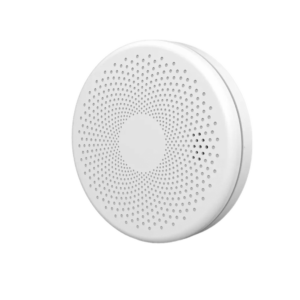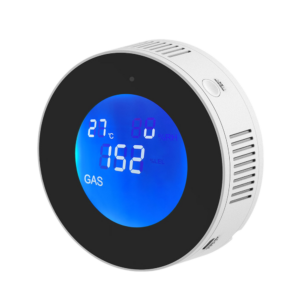Natural gas is a vital part of many homes, powering stoves, water heaters, and furnaces. But as useful as it is, natural gas leaks can be dangerous. That’s why more people are looking for ways to detect gas leaks quickly and easily—preferably with the help of their smartphones.
So the big question is: Is there an app to detect natural gas?
The short answer is yes—but it's not as simple as just downloading an app. Let’s dive into how gas detection apps actually work, what they connect to, and how you can protect your home with modern tools like a WiFi natural gas detector.
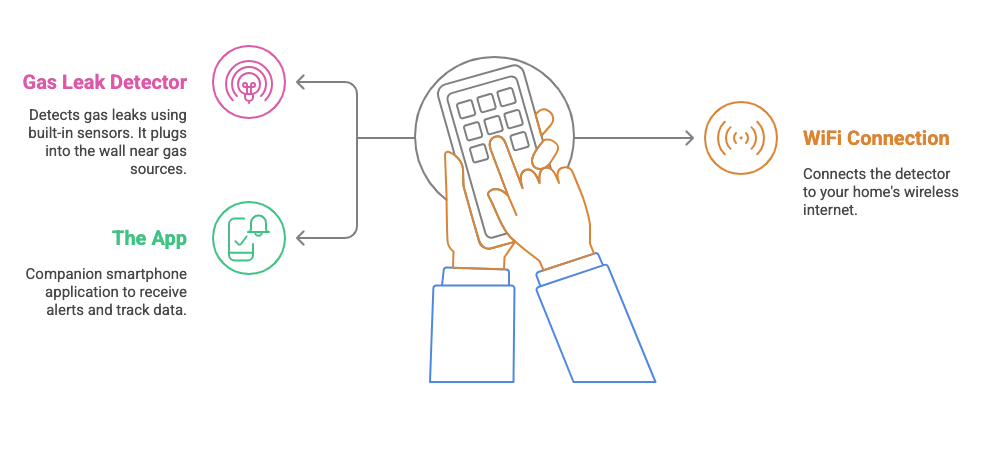
Can Your Phone Detect Gas by Itself?
No, your phone can’t detect gas on its own. It doesn’t have the right sensors built in. While smartphones are powerful devices, they don’t include hardware for detecting gas particles like methane, propane, or carbon monoxide.
That’s where a natural gas detector app comes in. These apps work together with external gas detectors that have WiFi or Bluetooth connections. Your phone acts as a monitor and controller—not the sensor itself.
How Do Natural Gas Detector Apps Work?
A natural gas detector app connects to a gas leak sensor in your home. Here's how the system typically works:
- The Sensor: This is a small device you plug into the wall near a gas source (like a stove or furnace). It has built-in sensors to detect gas leaks.
- WiFi Connection: The detector connects to your home WiFi network.
- The App: You install a companion app on your smartphone to receive alerts, track sensor data, and control settings.
When gas is detected, the sensor will sound an alarm and also send an alert to your phone via the app—no matter where you are.
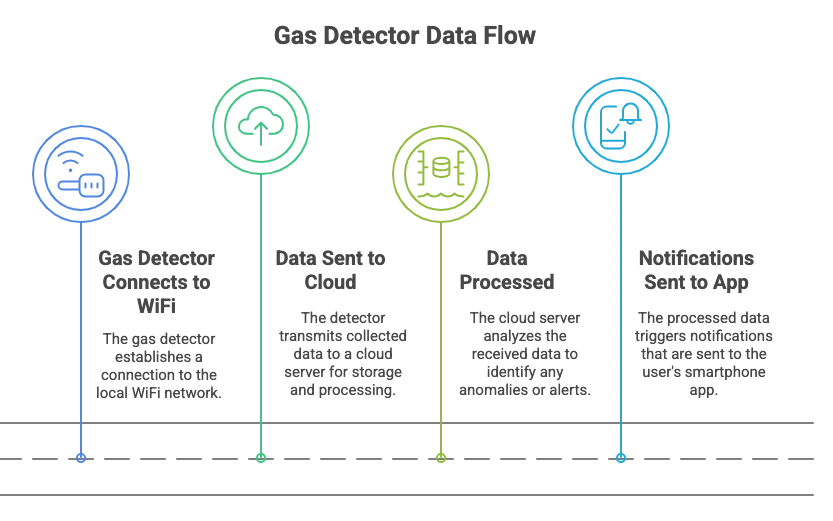
Why Use a WiFi Natural Gas Detector?
A traditional gas detector only works when you're at home and can hear the alarm. But what if you're at work, on vacation, or asleep in another room?
That’s why smart detectors are gaining popularity. A WiFi natural gas detector like this one from Grus sends push notifications to your phone the moment it detects a leak. This gives you time to react quickly—turn off the gas, call a technician, or warn family members.
Top benefits of a WiFi natural gas detector:
- Real-time alerts to your phone
- Remote monitoring from anywhere
- High-sensitivity sensor with fast detection
- Built-in sound alarm for local warnings
- Simple setup with smart home integration
Best Features to Look for in a Gas Detector App
When choosing a gas detector and its companion app, here are the key features to look for:
1. Real-Time Push Alerts
The app should notify you instantly if a gas leak is detected—no delay.
2. Device Health Monitoring
It should let you know if the detector loses power or WiFi connection.
3. Remote Control
You should be able to silence alarms or check device status through the app.
4. Multi-Device Support
Good apps let you manage multiple detectors in one dashboard—ideal for large homes or property managers.
5. Clear User Interface
You don’t want a confusing dashboard. Look for simple, clean design with easy access to alerts and settings.
Who Should Use a Natural Gas Detector App?
If your home uses natural gas or propane, you should strongly consider using one of these systems. This includes homes with:
- Gas stoves or ovens
- Gas water heaters
- Gas furnaces or fireplaces
- Propane tanks (for RVs or grills)
It's especially helpful for:
- Elderly residents who may not hear alarms easily
- Families with kids where safety is a top priority
- Frequent travelers who want peace of mind when away from home
- Landlords or property managers with multiple rental units
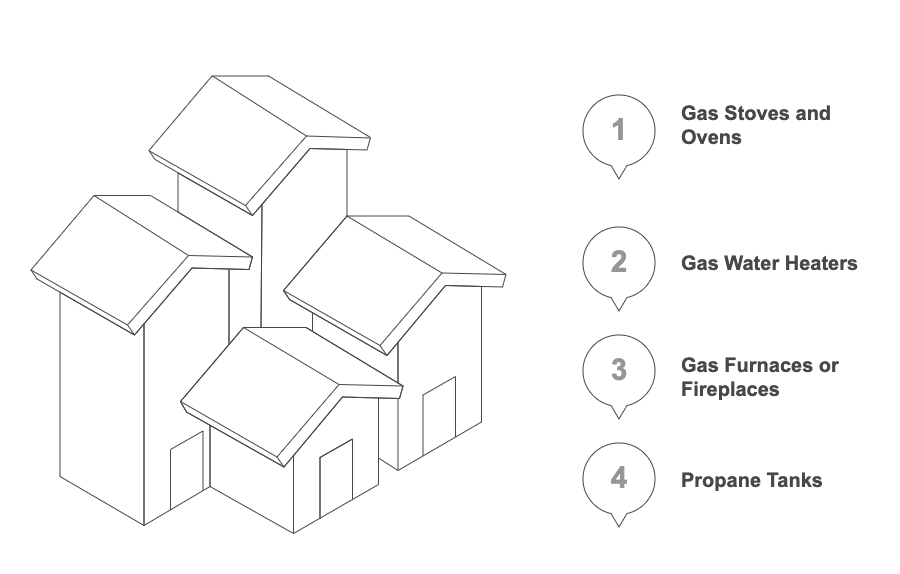
Where Should You Install the Gas Detector?
Placement is key for effective detection. Install your WiFi gas detector:
- Near gas-powered appliances (but not too close to flames)
- In kitchens, basements, or utility rooms
- About 12 inches below the ceiling (for methane, which rises)
- In rooms where people sleep, if there's a gas furnace nearby
How Reliable Are Natural Gas Detector Apps?
Modern natural gas detector systems are very reliable—especially when they combine:
- High-quality sensors
- Stable WiFi connection
- A well-designed companion app
However, no system is perfect. Make sure to:
- Test the detector regularly
- Keep your app updated
- Make sure notifications are enabled on your phone
With proper setup, you can trust a WiFi-enabled gas detector to be your early warning system.
Why Choose the Grus WiFi Natural Gas Detector?
At Grus, we specialize in smart home safety. WiFi Natural Gas Detector is built to detect both natural gas and propane leaks with high accuracy. It features:
- WiFi connectivity with no hub needed
- Mobile alerts via the Tuya Smart or Smart Life app
- 90 dB local alarm
- Compact, modern design
- Easy setup in just minutes
Whether you're upgrading your home's safety or setting up protection for a loved one, this device gives you 24/7 peace of mind.
FAQs: Natural Gas Detector Apps
Is there a free app to detect natural gas?
No, since phones can’t detect gas on their own, free apps without a detector won’t help. You need a sensor device that connects to a compatible app.
Can a smartphone detect gas leaks?
No, a smartphone by itself cannot detect gas leaks, because it doesn’t have the right sensors to sense gases like methane or butane. But when paired with a smart detector like the WiFi Gas Detector, your phone becomes a powerful monitoring tool. The device senses gas leaks, and the app sends real-time alerts to your phone — whether you’re home or away. It’s the safest and most convenient way to monitor gas leaks.
Is a natural gas detector the same as a propane detector?
Not exactly. Natural gas and propane are different gases, and not all detectors can sense both. The WiFi Gas Detector is designed to detect multiple types of combustible gases, including natural gas, coal gas, butane, and biogas. However, it does not detect propane (LPG). For accurate detection, always check which gases your detector supports.
Do I need a carbon monoxide detector too?
Yes. A gas detector like the GasNet-S4 helps detect gas leaks from fuels like natural gas or butane. But carbon monoxide (CO) is a separate danger. It's odorless and deadly — and it’s not detected by a gas leak sensor. For full protection, we recommend pairing your gas detector with the GasNet-CM Smoke and Carbon Monoxide Detector, which alerts you to both CO and smoke threats in your home.
Where do I place the detector for best results?
Natural gas rises, so place your detector high on the wall or on the ceiling, near gas appliances like your stove, water heater, or furnace. Avoid placing it near windows or vents where air flow could affect accuracy. The GasNet-S4 is compact and wall-mountable, making it easy to install in kitchens, laundry rooms, or basements. Proper placement is key to early leak detection.
Conclusion: Safety in Your Pocket
If you’ve ever wondered, “Is there an app to detect natural gas?” now you know the answer: yes—with the help of a smart gas detector.
Using a WiFi natural gas detector connected to a reliable app gives you the power to protect your home even when you're not there. It’s a small investment that could prevent a major disaster.
Ready to get started? Check out the Grus WiFi Natural Gas Detector and make your home safer today.

